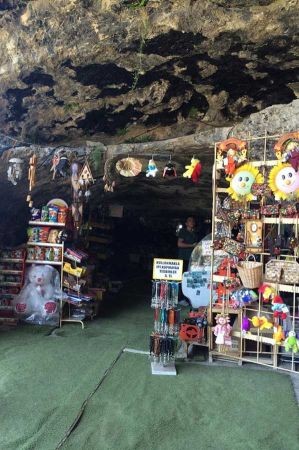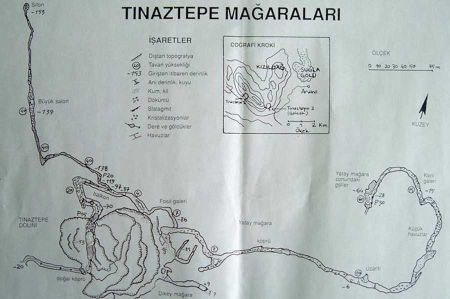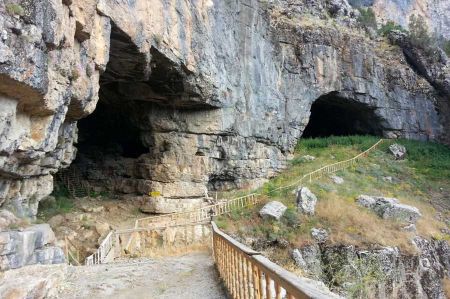Tinaztepe Cave on the way to Konya
- Written by Portal Editor
Like so many before us, we are on our way to an increasingly popular destination: the Tinaztepe Caves, because a trip to the Tinaztepe Cave (Tinaztepe Mağarsı) is worthwhile just because of the drive through the wild and romantic mountains of the Taurus Mountains.
From D400 Antalya - Alanya expressway, about 13 km before Manavgat, the D695 branches off towards Konya. The now well-developed road leads through the Taurus Mountains past smaller villages to the right and left of the road, in the vicinity of which one repeatedly comes across the stalls of local farmers. About 20 km before the city of Seydişehir, immediately behind a gas station, you can see the Tinaztepe Mağaralari (Mağaralari = cave). At first just a part of the Tinaztepe Cave was known, so it was assumed that the cave was about 1.5 km long and, apart from a 30 m long slope in the end area, runs almost horizontally.
Tinanztepe cave system - largely unexplored

In the book "Weltwunder", which is cited again and again and edited by both personalities, the reports come from other authors and the spectacular images does not come from these caves. So one can be more than sceptical about these claims.

This does not change the fascination of the 1,370 meter long corridors through the 230 million year old cave system.
At the end of the cave, the view from a small, secured platform into a gigantic hall, on the floor of which the lights are reflected in an underground lake, is spectacular.
Further research suggests huge dimensions
Please note, there is a drive of a good 130 km through mountains, which must, however, be driven on well-developed roads. Since it is high up, a severe sudden snow fall can be expected in late autumn and winter. Plan your travel time from Manavgat to be around 2½ hours. And please be careful, there is always flashing on this route.
The purpose of cave exploration
The uses of caves - research reasons
* Tourism
* Natural cold storage properties
* Maturation and protection of animal products (cheese, butter ...)
* Mushroom production
* Respiratory diseases
* Storage and liquid gases, natural gas and fuels
* Shelters and shelters for military purposes
* Guano (bat manure) production
* Minerals extraction
* Determination of underground lakes and after surface transport
* Establishing the spring water pollution points and protective measures
* The establishment of the regional geological geomorphological, hydrological, hydrogeological, anthropological and paleoecological characteristics.
Please read as well:
Hungary - from the capture of the Magyars to today
Ljubljana - first impression and historical background
